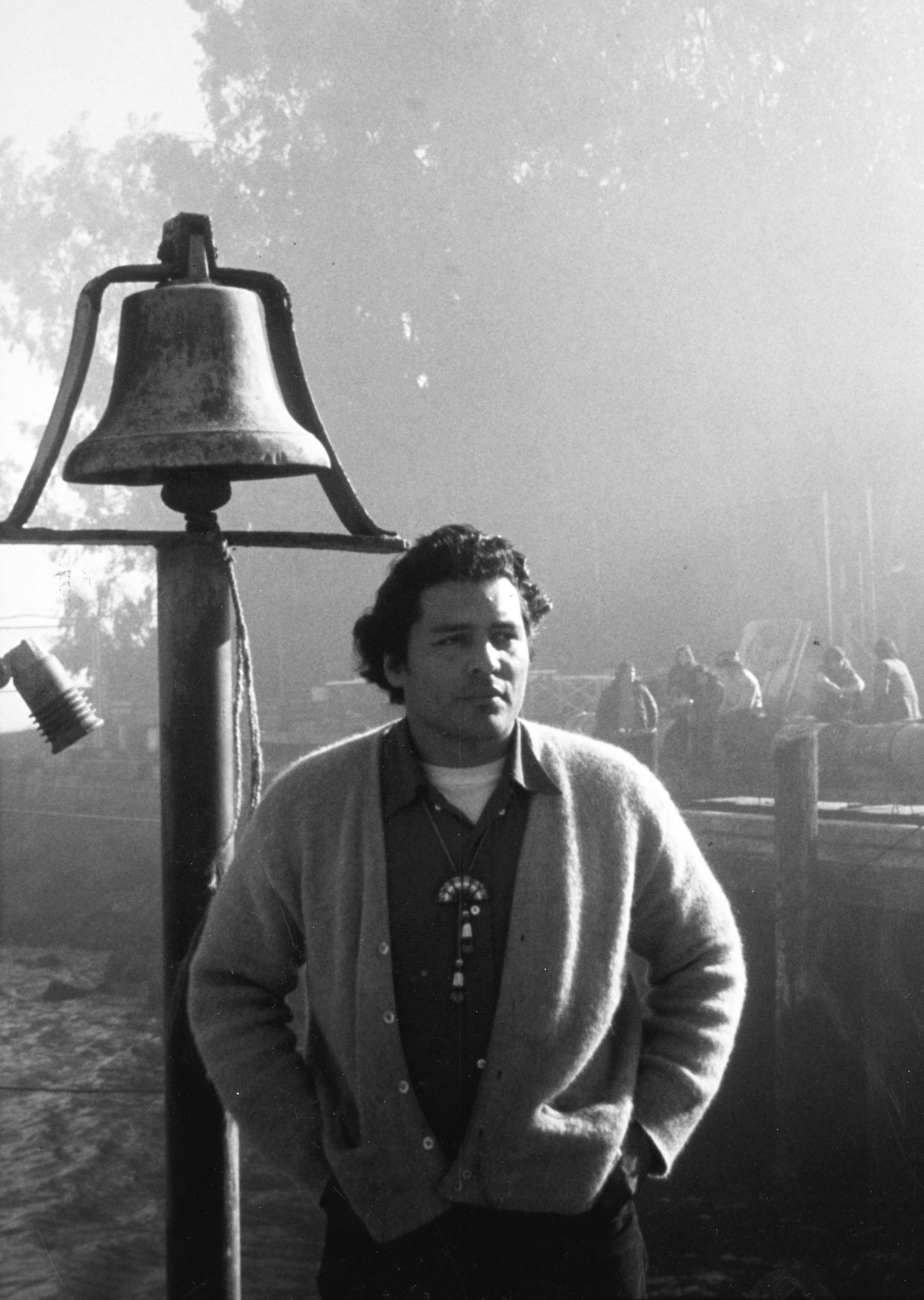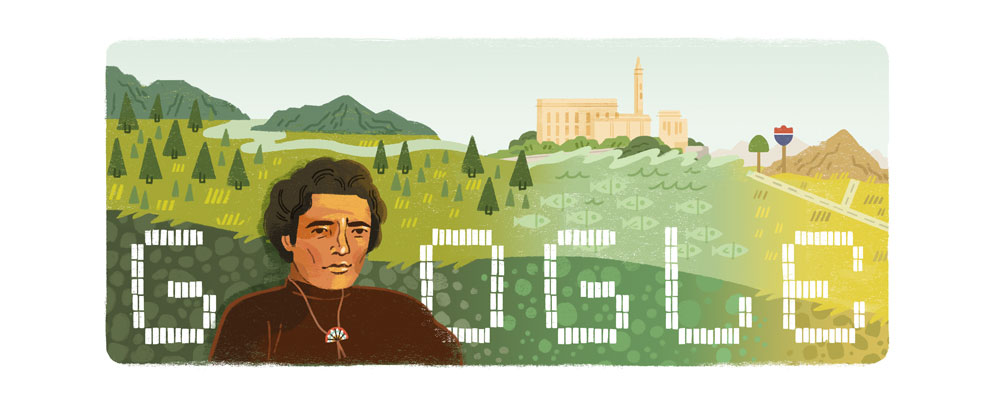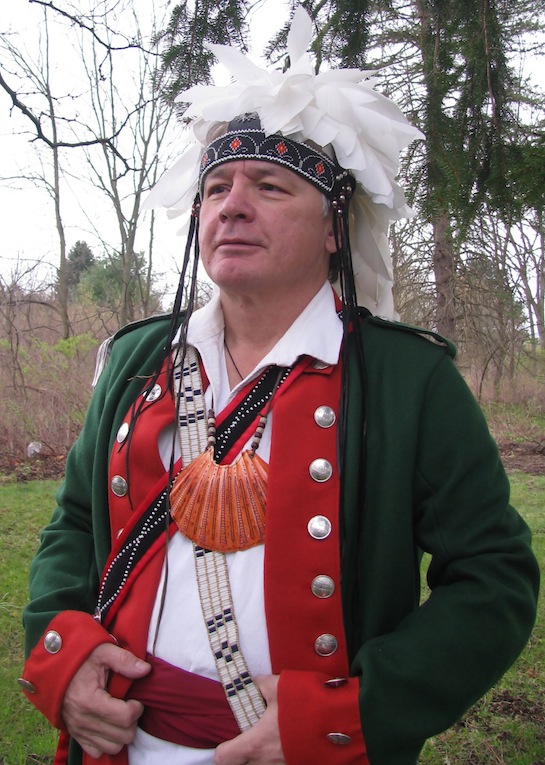Indianz.Com > News > Doug George-Kanentiio: Honoring a true Mohawk patriot
We Need to Honor Richard Thariwasate Oakes
Monday, September 19, 2022
On September 20, 1972, Richard Thariwasate Oakes was shot and killed by Michael Morgan in Sonoma County, California, the homeland of the Pomo Nation.
Thariwasate was born at Akwesasne in May of 1942, the son of Irene and Arthur Oakes, the grandson of Thomas Foote (my great-uncle); Foote was one of the most skilled lacrosse players of the 20th century.
As a young boy he followed his parents as they moved from Akwesasne to Syracuse. As a teenager he became an ironworker and followed jobs in many cities from the east coast to California. He settled in San Francisco where he met his wife Anna, a member of the Pomo Nation. He adopted her five children before she gave birth to their daughter Fawn.
Embed from Getty Images
Richard was deeply effected by the rise of Mohawk nationalism at Akwesasne. A small group of patriots had re-established the longhouse as they learned the rituals which defined the traditional spiritual customs. Among them were Ray Fadden, Ross and Madeline David, Louis and Eva Point, Mike Boots, Alec Gray, Jimmy Thompson and Frank “Standing Arrow” Johnson.
Standing Arrow would take the first dramatic steps towards asserting the ancestral rights of the Mohawk people by reclaiming land in the Mohawk Valley along Schoharie Creek in 1957. Although the Mohawks would be evicted by New York State the fires of activism had been lit.
A decade later the Mohawk Nation Council sanctioned the formation of the touring group White Roots of Peace. The December, 1968 blockade of the International Bridges near Cornwall, Ontario gave birth to Akwesasne Notes, a publication which become the most effective indigenous journal in history. Of those who were present at the beginning of Notes were the artist John Fadden-Kahionhes and Ernie Benedict. It was Benedict who proposed the formation of a northern version of the White Roots, a cultural and political caravan he called the North American Indian Traveling College. It was the Fadden family who led Mohawk students on long tours across the east, meeting other Native people and visiting historic sites.
Akwesasne would become the center for Indigenous activism across North America. Oakes was excited by what was taking place in his home community. He left his job as an ironworker in San Francisco and enrolled at San Francisco State University where he helped create one of the first American Indian studies programs in the United States.



Doug George-Kanentiio, Akwesasne Mohawk, is a residential school survivor. He was given the number 4-8-2-738. He serves as the vice-president of the Hiawatha Institute for Indigenous Knowledge. He previously served as a Trustee for the National Museum of the American Indian, is a former land claims negotiator for the Mohawk Nation and is the author of numerous books and articles about the Mohawk people. He may be reached via e-mail at: Kanentiio@aol.com or by calling 315-415-7288.
Search
Filed Under
Tags
More Headlines
AUDIO: American Indian and Alaska Native Public Witness Hearing Day 3
Native America Calling: The Trump administration, endangered fish and a new book
AUDIO: American Indian and Alaska Native Public Witness Hearing Day 2, Afternoon Session
AUDIO: American Indian and Alaska Native Public Witness Hearing Day 2, Morning Session
Native America Calling: The game is changing for student athletes
AUDIO: Federal Indian Trust Asset Management: Progress Made But Improvement Needed
AUDIO: American Indian and Alaska Native Public Witness Hearing Day 1, Afternoon Session
AUDIO: American Indian and Alaska Native Public Witness Hearing Day 1, Morning Session
Native America Calling: Native people left out of progress on overdose deaths
Native America Calling: Trump job cuts hit Native education and sacred sites
House Subcommittee on Indian and Insular Affairs meets for oversight hearing
NAFOA: Things You Need to Know this Week (February 24, 2025)
VIDEO: American Indian and Alaska Native Public Witness Hearing Day 3
VIDEO: American Indian and Alaska Native Public Witness Hearing Day 2, Afternoon Session
VIDEO: American Indian and Alaska Native Public Witness Hearing Day 2, Morning Session
More Headlines
Native America Calling: The Trump administration, endangered fish and a new book
AUDIO: American Indian and Alaska Native Public Witness Hearing Day 2, Afternoon Session
AUDIO: American Indian and Alaska Native Public Witness Hearing Day 2, Morning Session
Native America Calling: The game is changing for student athletes
AUDIO: Federal Indian Trust Asset Management: Progress Made But Improvement Needed
AUDIO: American Indian and Alaska Native Public Witness Hearing Day 1, Afternoon Session
AUDIO: American Indian and Alaska Native Public Witness Hearing Day 1, Morning Session
Native America Calling: Native people left out of progress on overdose deaths
Native America Calling: Trump job cuts hit Native education and sacred sites
House Subcommittee on Indian and Insular Affairs meets for oversight hearing
NAFOA: Things You Need to Know this Week (February 24, 2025)
VIDEO: American Indian and Alaska Native Public Witness Hearing Day 3
VIDEO: American Indian and Alaska Native Public Witness Hearing Day 2, Afternoon Session
VIDEO: American Indian and Alaska Native Public Witness Hearing Day 2, Morning Session
More Headlines